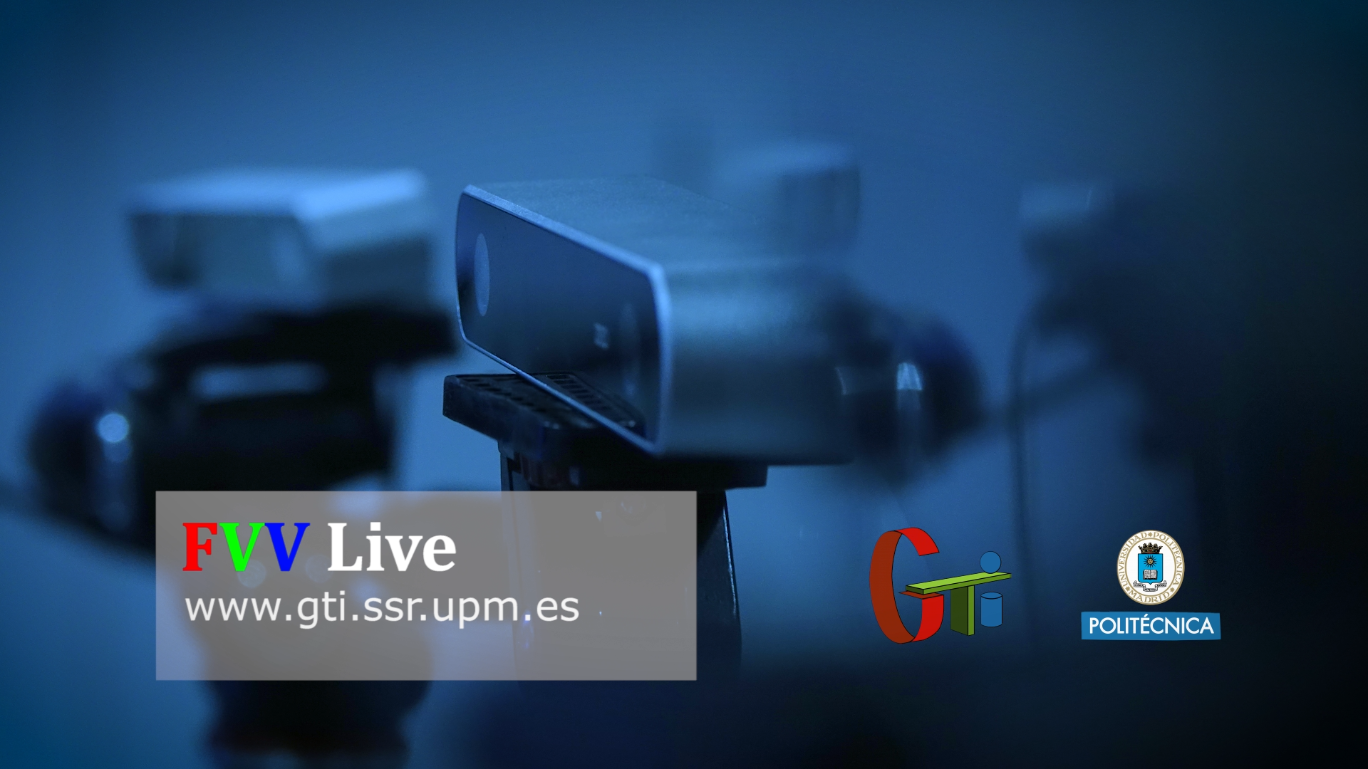Free View Point Video (FVV)
Free‑viewpoint video (FVV) lets a viewer move virtually through a captured real scene as if a camera could be placed anywhere—pausing, orbiting, diving in—rather than being limited to the fixed physical cameras. It changes how live events, performances, training sessions or remote collaboration can be experienced: the viewer chooses the path. Achieving that freedom with real‑time responsiveness and reasonable cost is far from trivial.

Why Free‑Viewpoint Video Is Hard
To synthesize a convincing novel view you need more than images; you need reliable scene geometry (depth) across all cameras, consistent calibration, and low latency pipelines. High‑end systems historically used dense arrays of expensive cameras or specialized active depth hardware, driving up cost and complexity and often limiting real‑time interaction. Sparse, consumer‑grade rigs introduce gaps, occlusions, stereo ambiguities and calibration drift—yet keeping cost low demands squeezing maximum quality from that setup.
Multi‑View Depth & 3D Reconstruction Challenges
Depth from passive multi‑view cameras faces recurring issues:
- Occlusions and disocclusions: regions visible in one view but not the other produce holes and unstable edges.
- Non‑Lambertian and low‑texture surfaces: reflections or uniform areas weaken correspondence scores, injecting noise.
- Calibration imperfections: sub‑pixel misalignment between camera pairs amplifies with distance, causing double edges in synthesized views.
- Mixed motion: foreground subjects move; background is static. Treating them identically wastes compute and bitrate.
- Real‑time constraints: per‑frame depth must be good enough and arrive fast; heavy multi‑pass optimization must be selective.
Overcoming these means modeling systematic depth errors, enforcing temporal consistency (so surfaces do not “shimmer”), separating foreground / background behavior, and fusing information from multiple cameras without introducing ghosting.
Existing System (High Level – prior work)
The published FVV Live system (see demo / paper below) employs a sparse array of calibrated stereo cameras feeding capture servers. Each camera supplies RGB plus an initial (imperfect) depth. A processing stage performs depth correction (mitigating systematic calibration / correspondence error) and background segmentation so static regions can be compressed, cached or updated at lower frequency. For a requested virtual viewpoint the edge server selects reference cameras, warps their color + depth (often foreground and background layers separately), resolves visibility / occlusions, and composites a novel view with tight latency constraints.
All of that core system design, implementation and publication predates my involvement. My role as an external, collaborative researcher is to explore how newer generative methods can further improve the depth and reconstruction quality feeding such a pipeline.
I am investigating generative approaches that sit on top of the classical multi‑view stereo stack, aiming to improve the depth estimation and 3D reconstruction.
Why This Is Interesting (Personal Perspective)
The problem nicely bridges classical geometry (calibration, stereo, visibility) with modern generative modeling and real‑time systems constraints (latency budgets, GPU memory, bitrate). Being constrained requires smart, creative engineering: how to pick the right priors, where to inject learned components, how to balance quality vs speed. The application space is compelling too: live events, remote collaboration, training simulations—being able to move freely through a real scene opens up new interaction modes and experiences.
References & Demo (Original System)
- Live demo and additional material: https://www.gti.ssr.upm.es/fvvlive
- Paper: “FVV Live: A real-time free-viewpoint video system with consumer electronics hardware” (arXiv PDF)